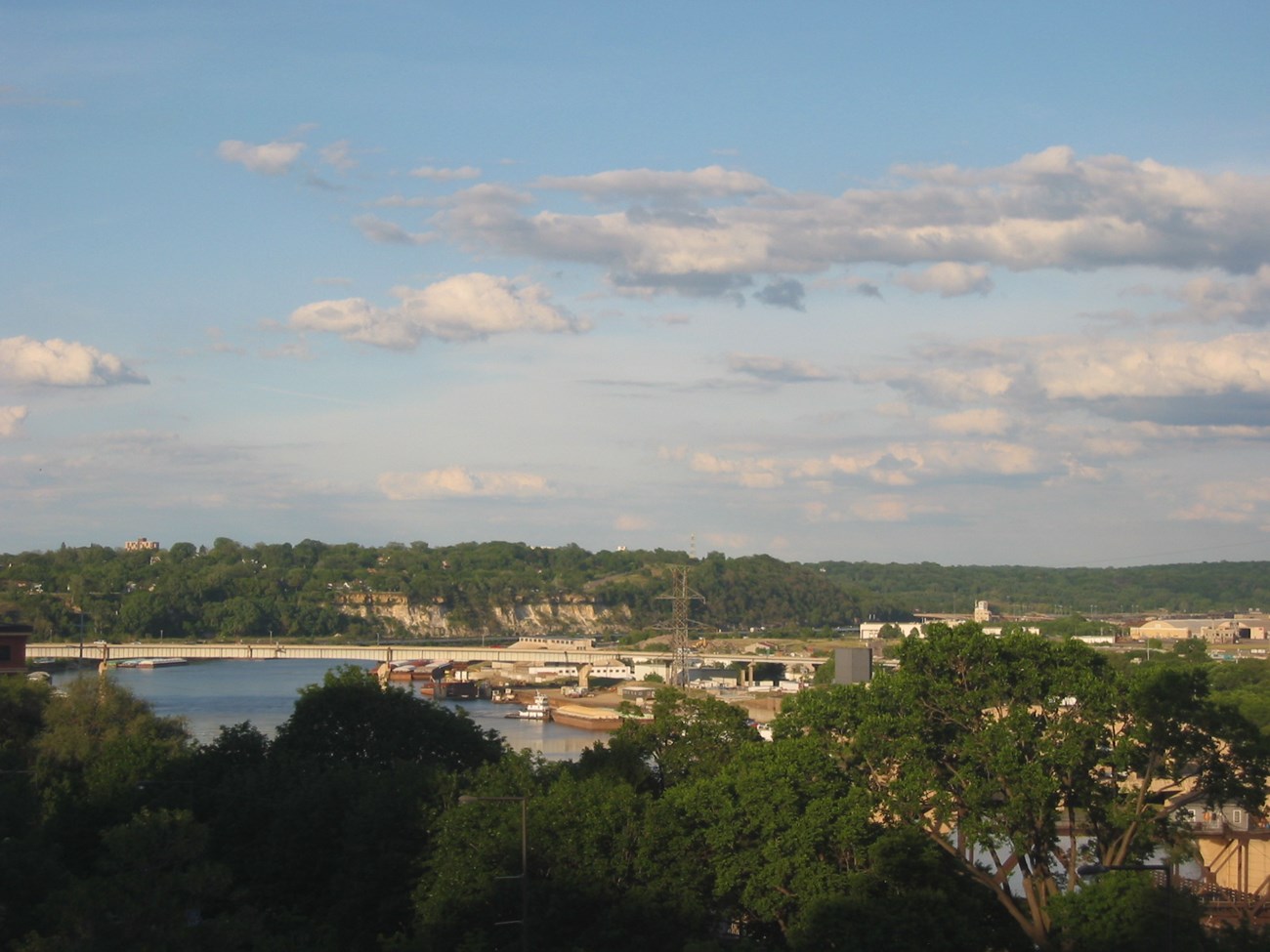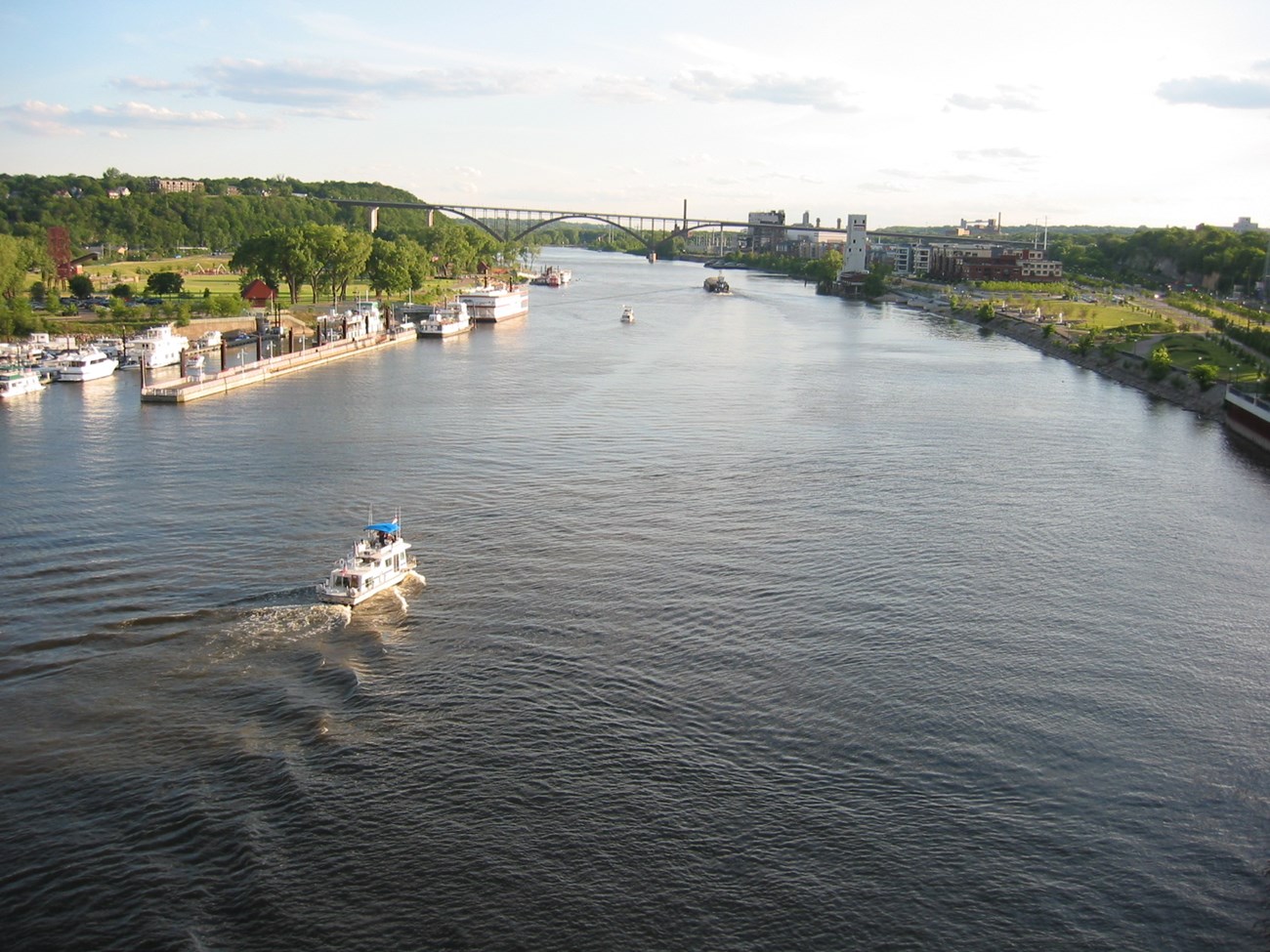Last updated: August 26, 2024
Article
Landscape Change Along the Upper Mississippi, 1990-2019

NPS photo/T. Gostomski
Our long-term monitoring of landscape dynamics inside and surrounding Mississippi National River and Recreation Area (MISS) employs an automated, satellite-based change detection program called LandTrendr. In this second report for MISS, we analyzed 30 years (1990–2019) of satellite imagery to identify and quantify landscape changes in and around MISS, including three sub-watersheds of the Mississippi River, for a total of 185,690 hectares (458,849 acres) of land, 16,085 ha (39,746 acres) of which was inside the MISS boundary.
Thirty Years of Growth
Development activities such as expanding roads and converting green space to business parks and single-family homes have been dominant for the last 30 years. Outside the park boundaries, much of the development occurred in the 1990s, peaking in 1996 and again, but slightly less so, in 2000. Inside the park boundaries, three small peaks, the largest occurring in 2000, punctuated what was otherwise a low-level but steady tide of development.Development activities affected the largest amounts of land, both inside the park boundary and in the surrounding area. Inside the park, 307 ha (758 acres) of land were developed over the 30-year period, at a rate of 10.23 ha (25 acres) per year. Outside the park, development accounted for 99% of landscape disturbances, affecting 14,686 ha (36,289 acres) total, at a rate of 489.53 ha (1,209 acres) each year.
Unlike other transitory disturbances such as forest harvest or windstorms, development is a cumulative and permanent change that has been shown to affect water quality in streams, rivers, and lakes. It also amplifies the effects of a warming climate by turning the metro area into a “heat island.”


Heat Islands
Structures such as buildings and roads absorb and re-emit the sun’s heat more than forests and water bodies. This “heat island effect” turns many urban areas into islands of higher temperatures relative to outlying areas. The U.S. Environmental Protection Agency reports that studies in the United States have documented daytime temperatures in urban areas that are about 1°–7°F. higher and nighttime temperatures about 2°–5°F. higher than temperatures in outlying areas.
U.S. Environmental Protection Agency (www.epa.gov/heatislands/learn-about-heat-islands)

NPS/T. Gostomski
Looking Ahead
Like other parks in the Great Lakes Network, there has been relatively little disturbance within MISS’s park boundary. Because this is an urban-dominated environment, the string of parks and other natural areas along the riverway provide important habitat and places of refuge for plants, wildlife, and people who live in the metropolitan area.Our continued monitoring will help us better understand how the changing landscape may affect water quality and wildlife corridors and contribute to the “heat island effect” along the river corridor in the Twin Cities.
